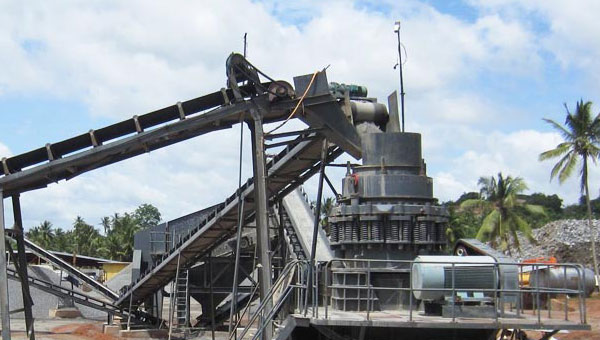Cone crushers are crucial machines used in mining and aggregate industries for reducing the size of large rocks. A 3-foot diameter cone crusher is a commonly used model for medium and fine crushing applications, especially in the production of aggregate materials for construction and road building. In this article, we will explore the key factors that determine the capacity of a 3-foot cone crusher and what you can expect from this machine.
What is a 3-Foot Cone Crusher?
A “3-foot cone crusher” refers to the size of the cone’s head, which is 3 feet in diameter. It’s a type of short head or standard cone crusher, widely used for crushing hard and medium-hard materials. The “foot” in this context relates to the crusher’s cone size, which determines its throughput capacity and the size of the output product.
Cone crushers generally have a wide range of applications, from primary crushing to fine secondary crushing. A 3-foot cone crusher is typically used for processing materials like granite, limestone, iron ore, and basalt.

Understanding the Capacity of a 3-Foot Cone Crusher
The capacity of a cone crusher refers to the amount of material it can process in a given period, typically measured in tons per hour (tph). Several factors affect the capacity of a cone crusher, such as the type of material being crushed, the size of the feed, and the operational settings of the machine.
For a 3-foot diameter cone crusher, the typical production capacity ranges from 50 to 150 tons per hour (tph), depending on these factors.
Key Factors Influencing Capacity:
-
Feed Size: The size of the material being fed into the cone crusher significantly impacts the capacity. If the feed is larger than the crusher’s maximum feed size, it will lead to overloading and poor efficiency. A properly sized feed will ensure that the machine operates at its optimum capacity.
-
Setting and Stroke: The operational settings of the cone crusher, including the closed-side setting (CSS) and stroke length, play a crucial role in determining throughput. A tighter CSS (which results in smaller output material) will typically reduce the capacity, whereas a wider CSS can allow for higher capacity at the cost of producing coarser material.
-
Material Characteristics: Harder materials like granite or basalt require more energy to crush, potentially reducing the throughput. Softer rocks, on the other hand, can be processed more quickly, thus increasing the capacity.
-
Speed of Operation: Cone crushers typically operate at various speeds. Increasing the rotational speed of the crusher’s cone can help increase capacity, but it also increases the risk of wear and tear, so it must be carefully managed.
Typical Capacities for a 3-Foot Cone Crusher
A 3-foot cone crusher will generally offer different capacities based on its settings and feed material. Below are some general figures:
-
Maximum Feed Size: Around 200 mm to 300 mm (8 inches to 12 inches).
-
Throughput Capacity: Between 50 tph to 150 tph, depending on the hardness and size of the material.
-
Closed-Side Setting (CSS): Ranges from 10 mm (3/8 inch) to 75 mm (3 inches), with finer settings resulting in smaller outputs but reduced capacity.
For example, if the material is relatively soft, the crusher may be able to achieve the upper limit of its capacity range, close to 150 tph. However, with harder or more abrasive materials, the output may be closer to 50 tph.
The 3-foot cone crusher remains a popular choice for mid-level operations that require efficient crushing with a capacity range of 50 to 150 tons per hour. It strikes a good balance between productivity, versatility, and cost-effectiveness, making it a reliable choice for processing a variety of materials. However, to maximize its performance, it is crucial to consider feed size, material characteristics, and operational settings.
